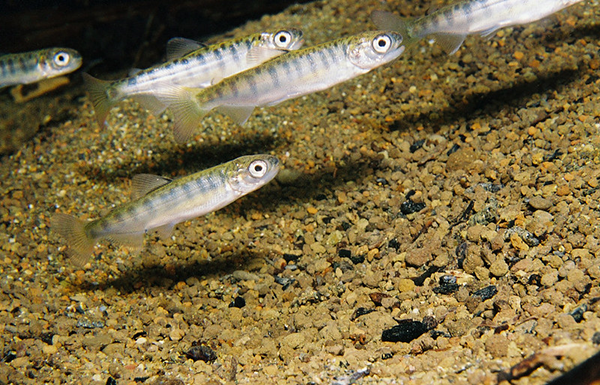New Publication on Contaminant Impacts to Growth and Survival of Juvenile Chinook Salmon
JAN. 22, 2024 — OR&R staff co-authored a new publication, "Dietary Exposure to Environmentally Relevant Levels of Chemical Contaminants Reduces Growth and Survival in Juvenile Chinook Salmon." This work supports injury determination for Pacific Northwest Superfund sites that have similar contaminants of concern; specifically, mixtures of polychlorinated biphenyls (PCBs), dichlorodiphenyltrichloroethanes (DDTs), and polycyclic aromatic hydrocarbons (PAHs).

The presence of chemical contaminants is a driver of poor water quality that is limiting the recovery of wild Pacific salmon populations that are listed as threatened or endangered under the Endangered Species Act. Although many legacy persistent organic pollutants have been phased out, and their environmental levels have decreased in many habitats, the effects of these present-day exposure levels have not been well characterized. Specifically, information on adverse health outcomes associated with juvenile salmon exposure to mixtures of these contaminants at current levels is lacking.
The research reported determined the effects of contaminant exposures on the growth and disease susceptibility of juvenile Chinook salmon. The salmon were dietarily exposed for 35 days to mixtures of DDTs, PCB, and PAHs at multiple doses with chemical proportions that reflected the levels of contaminants found in the stomach contents of juvenile Chinook salmon collected from Portland Harbor in 2018. Salmon exposed to current environmentally relevant levels of contaminants, as well as greater doses, had significantly reduced fork lengths and otolith microstructural growth indicators. Similarly, salmon that were fed the environmentally relevant dose for 35 days had reduced disease resistance, as demonstrated by higher rates of mortality when subsequently challenged with the pathogen Aeromonas salmonicida.
These results show that dietary exposures to mixtures of industrial contaminants, at present-day levels, remain a concern that should be considered through the Natural Resource Damage Assessment process, as they can cause injury via adverse effects on salmon growth and disease resistance.
